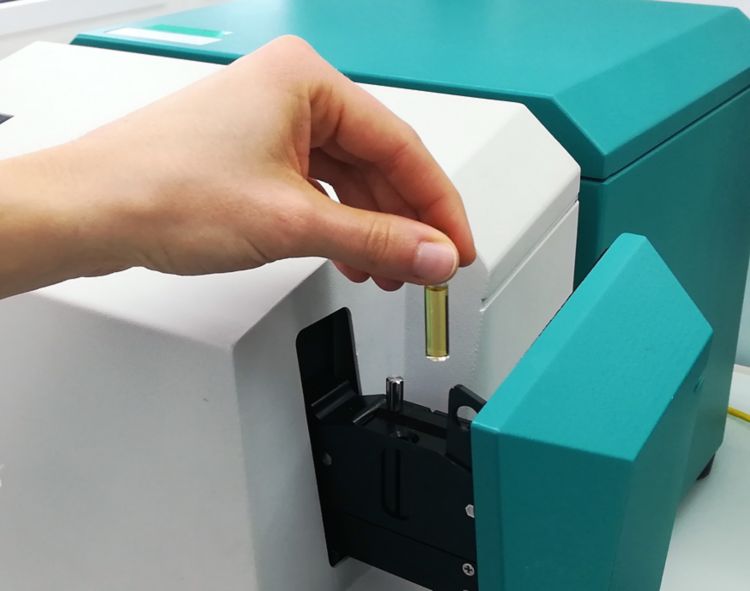In recent years, there has been a significant push to reduce the environmental impacts of fuels through improvements to fuel quality. This requires engines to be more efficient, along with increasing the octane content of fuel so higher compression engines can be utilized. The determination of key quality parameters of gasoline, namely research octane number (RON, ASTM D2699-19), motor octane number (MON, ASTM D2700-19), anti knock index (AKI), aromatic content (ASTM D5769-15), and density, conventionally requires several different analytical methods, which are laborious and need trained personnel. This application note demonstrates that the XDS RapidLiquid Analyzer, operating in the visible and near-infrared spectral region (Vis- NIR), provides a cost-efficient and fast solution for the multiparameter analysis of gasoline.

Gasoline samples were measured with the XDS RapidLiquid Analyzer (RLA) in transmission mode over the full wavelength range (400–2500 nm). Reproducible spectrum acquisition was achieved using the built-in temperature controlled sample holder. For convenience, disposable vials with a path length of 8 mm were used, which made a cleaning procedure unnecessary. The Metrohm software package Vision Air Complete was used for data acquisition and prediction model development.
| Equipment | Metrohm number |
|---|---|
| XDS RapidLiquid Analyzer | 2.921.1410 |
| Disposable vials, 8 mm diameter, transmission | 6.7402.000 |
| Vision Air 2.0 Complete | 6.6072.208 |
The obtained Vis-NIR spectra (Figure 2) were used to create prediction models for the determination of several key fuel parameters. The quality of the prediction models was evaluated using correlation diagrams, which display a correlation between the Vis-NIR prediction and primary method values. The respective figures of merit (FOM) display the expected precision of a prediction during routine analysis.
Result RON value
| Figures of merit | Value |
|---|---|
| R2 | 0.989 |
| Standard error of calibration | 0.26 |
| Standard error of cross-validation | 0.29 |
Result MON value
| Figures of merit | Value |
|---|---|
| R2 | 0.889 |
| Standard error of calibration | 0.50 |
| Standard error of cross-validation | 0.53 |
Result aromatics content
| Figures of merit | Value |
|---|---|
| R2 | 0.974 |
| Standard error of calibration | 0.97 vol% |
| Standard error of cross-validation | 1.07 vol% |
Result density
| Figures of merit | Value |
|---|---|
| R2 | 0.973 |
| Standard error of calibration | 0.0021 kg/L |
| Standard error of cross-validation | 0.0023 kg/L |
Result AKI value
| Figures of merit | Value |
|---|---|
| R2 | 0.945 |
| Standard error of calibration | 0.45 |
| Standard error of cross-validation | 0.46 |
This application note shows the feasibility of NIR spectroscopy for the analysis of RON, MON, AKI, aromatic content, and density. In comparison to wet chemical methods (Table 7), the time to result is a major advantage of NIR spectroscopy, since a single measurement is performed within one minute.
| Parameter | Method | Time to result |
|---|---|---|
| RON | CFR engine test | ∼30 minutes per sample |
| MON | CFR engine test | ∼30 minutes per sample |
| AKI | CFR engine test | ∼30 minutes per sample |
| Aromatic content | Gas Chromatography | ∼45 minutes per sample |
To view the information for all key parameters and to get the latest information, please check out our precalibrations:
 Share via email
Share via email
 Download PDF
Download PDF